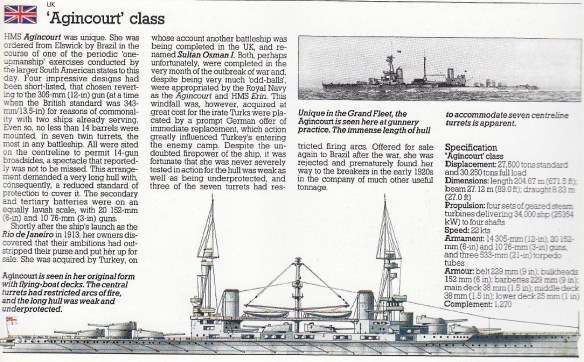HMS Agincourt was a dreadnought battleship built in the United Kingdom in the early 1910s. Originally part of Brazil’s role in a South American naval arms race, she held the distinction of mounting more heavy guns (fourteen) and more turrets (seven) than any other dreadnought battleship constructed, in keeping with the Brazilians’ requirement for an especially impressive design.
Brazil ordered the ship as Rio de Janeiro from the British Armstrong Whitworth shipyard, but the collapse of the rubber boom and a warming in relations with the country’s chief rival, Argentina, led to the ship’s sale while under construction to the Ottoman Empire. The Ottomans renamed her Sultan Osman I, after the empire’s founder. The ship was nearly complete when World War I broke out, and British Admiralty fears of a German–Ottoman alliance led to her seizure for use by the Royal Navy. This act was a major contributor to the decision of the Ottoman Empire to support Germany in the war. Renamed Agincourt by the British, she joined the Grand Fleet in the North Sea. The ship spent the bulk of her time during the war on patrols and exercises, although she did participate in the Battle of Jutland in 1916. Agincourt was put into reserve in 1919 and sold for scrap in 1922 to meet the terms of the Washington Naval Treaty.
